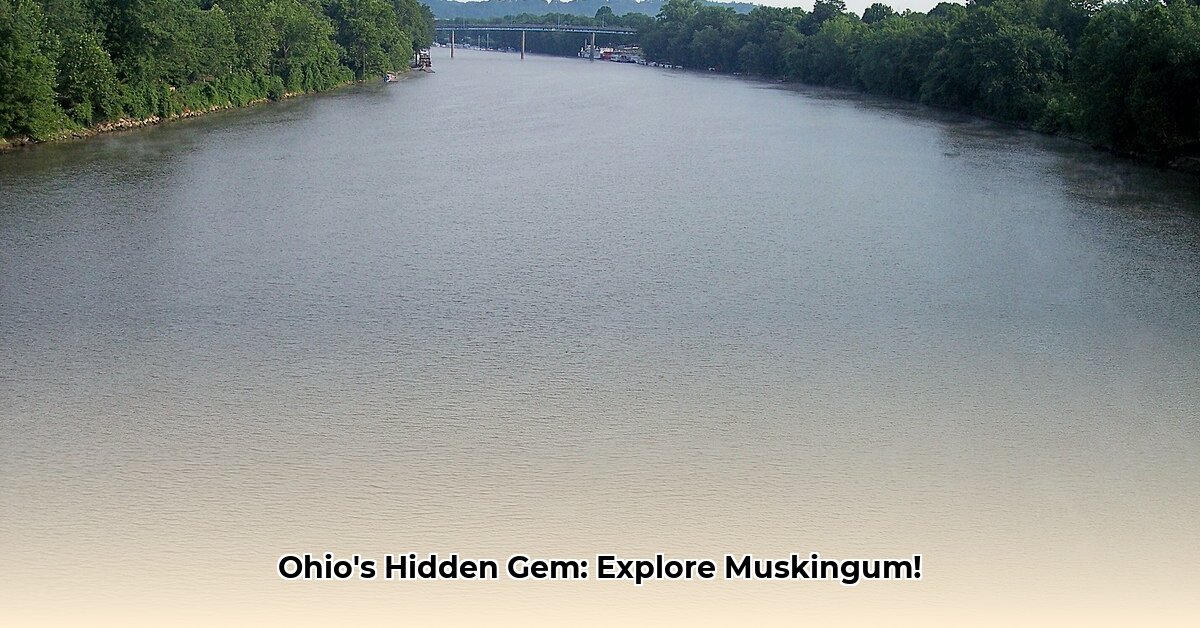
Muskingum River State Park: A Tapestry of History and Nature
The Muskingum River State Park in Ohio is more than just a scenic destination; it's a living testament to human ingenuity and environmental resilience. Imagine a time before automobiles, when the river served as the lifeblood of the region, carrying goods and people along its winding path. This legacy is palpable at the park, especially within its remarkable hand-operated lock system – a National Historic Civil Engineering Landmark. These ancient locks, testaments to the skill and perseverance of early Ohioans, whisper tales of a bygone era, offering a captivating glimpse into the state's rich past. Did you know that each lock's operation required an intricate choreography of skill and teamwork? This human element adds a layer of intrigue to the park's historical significance.
But the Muskingum River State Park is not just a historical treasure; it also boasts extraordinary biodiversity. The river itself teems with life, supporting a wide array of plant and animal species, including some incredibly rare mussel populations. These fragile creatures act as vital indicators of the river's health, highlighting the delicate balance of this unique ecosystem. "The presence of these rare mussels underscores the importance of preserving the river’s pristine conditions," explains Dr. Emily Carter, Aquatic Ecologist at Ohio State University. "Their survival is intrinsically linked to the overall health of the waterway." Understanding this intricate web of life is vital for effective conservation efforts.
The challenge lies in balancing the park's preservation with its growing popularity. How can we ensure that future generations can experience the beauty and history of the Muskingum River without compromising its ecological integrity? This is where the principles of sustainable tourism come into play. Responsible visitation is key, demanding careful management of waste, resource consumption and visitor impact. Even small actions, like responsible boating practices that minimize sediment disturbance, are crucial to mitigating environmental stress.
Preserving the Past, Protecting the Future: Sustainable Tourism Strategies
The Muskingum River State Park possesses immense potential for eco-tourism. Imagine guided tours that unveil the secrets of the river's biodiversity, revealing the fascinating world of rare mussels and the unique plant life that thrives along its banks. Picture engaging educational programs that bring the park's history to life, teaching visitors about the remarkable engineering of the lock system and its profound impact on local communities. These initiatives are not just attractive additions; they represent an opportunity to boost the local economy by creating employment opportunities while fostering a deeper appreciation for the park's natural and cultural heritage.
To realize this vision, a comprehensive plan is needed – a multifaceted strategy that addresses the challenges from various perspectives:
Enhance Visitor Education: Invest in informative and captivating signage and exhibits. These informative tools should tell the compelling stories behind the locks, explain the critical role of the river's ecosystem, and demonstrate how visitors can actively contribute to its preservation. Clear, concise signage can make a big difference in minimizing negative visitor impact.
Implement Sustainable Practices: Enforce stringent, environmentally friendly policies. This includes effective waste management programs, erosion control measures, and responsible resource utilization. Regular monitoring and audits are vital to ensure the effectiveness of these measures. Regular inspections of the locks, for example, are vital to their long-term preservation.
Foster Partnerships: Establish collaborations with local communities, researchers, and environmental organizations. Collective efforts can leverage resources, expertise, and influence for a more significant positive impact. A unified approach to conservation is far more effective than isolated initiatives.
Secure Funding: Develop a sustainable funding strategy. This necessitates exploring avenues such as grants, tourism revenue, and creative public-private partnerships. Securing reliable funding is crucial for long-term maintenance and restoration projects. Remember the historical locks require ongoing maintenance to prevent deterioration.
Promote Responsible Recreation: Emphasize eco-conscious tourism. Through targeted marketing and outreach (perhaps through social media or online partnerships), we can encourage responsible behavior within the park. Clear guidelines and readily available information about sustainable practices can encourage visitors to minimize their footprint.
The future of the Muskingum River State Park hangs in the balance. Will it flourish as an exemplary model of sustainable tourism, a place where history and nature harmoniously coexist? Or will it succumb to unchecked development and environmental neglect? The choice, and the responsibility, rests with us. Let's collectively ensure that this invaluable Ohio treasure remains a vibrant and treasured destination for generations to come.